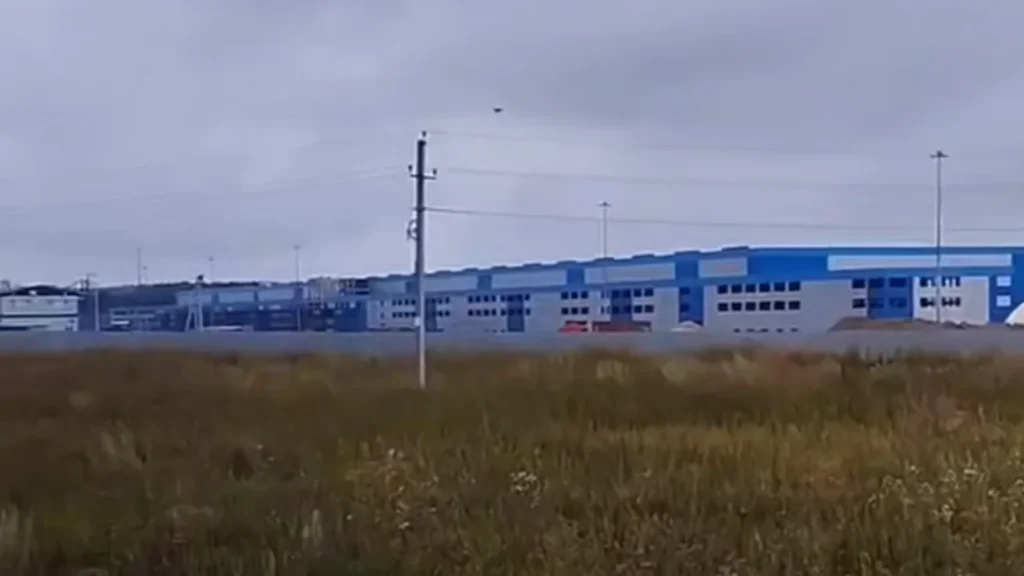Ukraine hits core of Moscow’s drone war machine for second time in single week

Ukraine’s Security Service (SBU) has targeted another Shahed drone storage facility in Russia’s Tatarstan, 1,300 km from Ukraine. The SBU announced the destruction of ready-to-use attack drones and foreign components in the latest strike.
Ukraine’s systematic targeting of Russia’s drone infrastructure aims to disrupt Moscow’s ability to launch nightly swarms of 100+ Shaheds that build reserves before unleashing massive coordinated attacks of 500+ drones against Ukrainian cities.
Russia’s expanding drone production network now manufactures over 5,000 Shaheds monthly, transforming Iranian designs into a cornerstone of its terror campaign against Ukrainian civilians far from the front lines.
This is the second such strike within a week, as Ukraine continues to target Russia’s weapons supplies deep within the country. The most recent strike on 9 August destroyed attack drones and foreign components using a domestically-produced Liutyi drone with 75-kg warheads to hit a logistics hub in the region.
Russia’s Republic of Tatarstan is home to the main production facilities for Shahed drones used by Russia, particularly the Yelabuga facility located within the Alabuga Special Economic Zone.
Latest strike targets Shahed logistics
The SBU Special Operations Center “A” announced that their long-range drones struck a logistics hub in Kzyl-Yul, Republic of Tatarstan.
Videos taken by local residents confirm the strike on the warehouse.
The series of strikes is “aimed at reducing the enemy’s capabilities for ‘Shahed’ terror in Ukraine,” the SBU reports. They add that “operations at enterprises that provide weapons to the Russian military machine will continue.”
Strikes expand to defense plants
The Tatarstan operations also follow drone strikes on two defense plants in Orenburg and Stavropol regions within 24 hours.
On 11 August, Ukrainian military intelligence (HUR) drones struck the Orenburg Helium Plant, Russia’s only helium production facility located 1,200 kilometers from the front line. In the early hours of 12 August, HUR drones also targeted the Monocrystal JSC plant in Stavropol, sparking a fire approximately 480 km from the frontline.
Ukraine’s expanding deep-strike campaign
These strikes continue Ukraine’s systematic targeting of Russia’s drone production network throughout 2025, striking warhead labs, antenna plants, and control system factories deep inside the country.
This week’s operations follow previous Ukrainian strikes on Shahed infrastructure, including January strikes that destroyed over 200 Shahed drones in storage facilities in Russia’s Oryol Oblast and attacks on the Yelabuga industrial zone, which houses Russia’s largest known Shahed production facility.
Russia has launched thousands of Iranian-designed Shahed drones against Ukraine since fall 2022. Western media reports that each Shahed-136 drone costs as low as $20,000, making them cost-effective weapons for mass attacks on Ukrainian infrastructure and cities.
Read also
-
Black clouds of smoke rise over Tatarstan as Ukrainian 75-kg warhead drones decimate Shahed storage 1,300 km inside Russia
-
Two Russian defense plants hit in under 24 hours — drones strike Orenburg helium site and Stavropol sapphire factory
-
Ukraine’s drone campaign forces Russia to rethink war production strategy – analysts